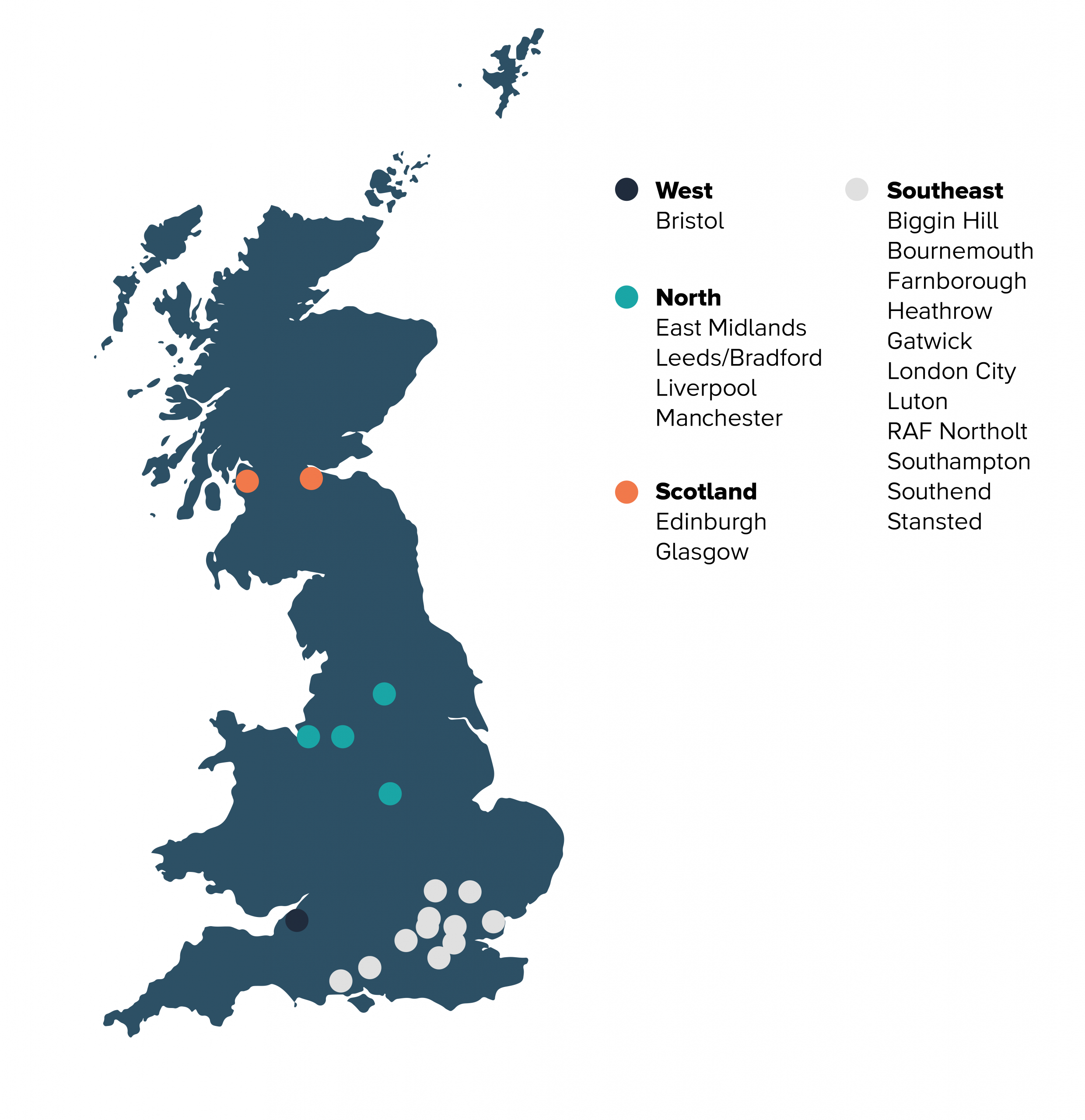
Who is involved?
The modernisation of airspace around UK airports involves numerous stakeholders working together to achieve it.
There are currently 18 UK airports and NATS involved in the delivery of the national programme of airspace change that ACOG is coordinating.
Airports are responsible for designing the arrival and departure routes that support their operations from the ground to around 7000ft and the surrounding controlled airspace. They also take responsibility for the way the airspace is used and developed in this lower portion of airspace.
NATS is responsible for the controlled airspace, the route network and for the way the airspace is used and developed above 7000ft. It is also responsible for redesigning airspace above 7000ft that connects the airports’ routes with the en route network.
The Department for Transport (DfT) and Civil Aviation Authority (CAA) are co-sponsors of the Airspace Modernisation Strategy (AMS). This includes oversight for the airspace change programme (referred to in the AMS as Terminal Airspace Redesign). The CAA is also responsible for providing guidance on, and approval of, airspace changes.
Each of the airports and NATS have to follow a structured framework developed by the CAA when creating their airspace change proposals (ACPs) – known as CAP1616. It is designed to ensure that changes are considered in a consistent manner, and take into account the needs of all stakeholders. The process includes developing options and assessing their impacts, engagement with the public and various rounds of review before implementation.
It is ACOG’s role to then knit together these individual airspace change proposals into a cohesive Masterplan.

Masterplan ACP clusters
The airspace change proposals that make up the Masterplan are split into four clusters. Each cluster is based on the interdependencies between the individual proposals, and analysis conducted by NATS into areas of the existing airspace where inefficiencies and delays are expected to worsen as traffic levels grow.
By organising airports into clusters it means that the simpler airspace changes can be deployed sooner.
The map below illustrates the airport-sponsored ACPs in each cluster, located in:
- the west of England, known as the West Terminal Airspace;
- the north of England, known as the Manchester Terminal Manoeuvring Area (MTMA);
- the south of Scotland, known as the Scottish Terminal Manoeuvring Area (ScTMA); and
- the southeast of England, known as the London Terminal Manoeuvring Area (LTMA).*

*The UK Government has committed to bringing forward a UK Airspace Design Service (UKADS) to take on responsibility for progressing the LTMA. UKADS is due to be set up by the end of 2025.
Why some airports are not involved
Only ACPs that are considered strategically important to achieving the airspace modernisation objectives are included in each cluster. These ACPs were identified in the Iteration 2 of the Airspace Change Masterplan.
Some larger airports, like Birmingham, Newcastle International, Aberdeen and Inverness are not currently included in the masterplan because modernising the routes that serve their operations is not expected to make a significant national or regional contribution to achieving the airspace modernisation vision. These airports, and others (for example, Belfast International, Belfast City, Norwich and Newquay) do not form part of a coordinated overall airspace design and they do not share interdependencies with the existing masterplan ACPs.

